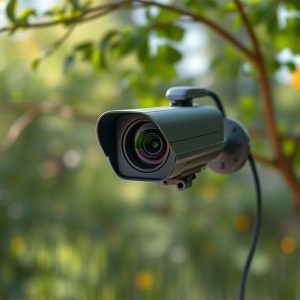Mastering Nighttime Spy Camera Concealment: Detection & Avoidance Techniques
Camera lens glint, a subtle glow from reflected light, reveals hidden spy cameras. To conceal them,…….
Camera lens glint, a subtle glow from reflected light, reveals hidden spy cameras. To conceal them, angle and position devices strategically, manipulate lighting, and use non-descript lenses or creative mounting locations like flower pots or signs. Nighttime detection requires infrared sensors and thermal imaging technology combined with low-light imaging techniques. Stay ahead in operational security by staying updated on concealment and detection advancements. Learn effective methods for how to conceal spy cameras using these techniques.
In the realm of surveillance, undetected operation is key. One telltale sign of hidden cameras is the glint they reflect, especially in low-light conditions. This article demystifies camera lens glint detection during nighttime, providing a comprehensive guide for professionals and privacy advocates alike. We’ll explore effective techniques and tools to identify these subtle hints, coupled with strategic tips on how to conceal spy cameras, ensuring your equipment remains hidden from prying eyes.
- Understanding Camera Lens Glint: The Spy Camera Indicator
- Detecting Nighttime Glints: Techniques and Tools
- Concealing Your Equipment: Strategies to Avoid Detection
Understanding Camera Lens Glint: The Spy Camera Indicator
Camera lens glint, often referred to as the spy camera indicator, is a telltale sign that can expose hidden surveillance devices. When light reflects off the interior surface of a camera lens, it creates a subtle glow or glare visible through the exterior. This phenomenon occurs because the lens itself acts like a mirror, reflecting ambient light back towards the viewer. By understanding how and when this glint appears, individuals can enhance their ability to conceal spy cameras, making them less detectable to the naked eye.
For those seeking to hide surveillance equipment, recognizing these visual cues is essential. It involves observing any unusual reflections or bright spots in images or videos captured by a camera. How to conceal spy cameras effectively involves strategic placement and angle adjustments to minimize lens glint. By manipulating lighting conditions and employing clever positioning techniques, it becomes possible to prevent the interior lens from reflecting external light, making hidden cameras nearly impossible to detect without specialized equipment.
Detecting Nighttime Glints: Techniques and Tools
Detecting glints from spy cameras at night can be a challenging task, but with the right techniques and tools, it becomes more manageable. One of the primary methods involves using specialized infrared (IR) sensors and thermal imaging technology. These advanced devices can identify heat signatures, making them effective in locating hidden cameras that emit IR light for operation in low-light conditions. By analyzing temperature variations in an image or video feed, security professionals can pinpoint the presence of a spy camera lens.
Additionally, enhancing night vision with low-light imaging techniques further aids in concealment detection. This includes utilizing high-sensitivity cameras equipped with specialized lenses and filters that minimize reflections and glints while amplifying available light. Combining these methods with human expertise ensures more accurate identification and subsequent removal or deactivation of hidden spy cameras.
Concealing Your Equipment: Strategies to Avoid Detection
To effectively employ camera lens glint detection at night, one crucial step often overlooked is concealing your equipment. Unsuspecting subjects can quickly spot spy cameras, rendering any data collection futile. Therefore, adopting strategies to avoid detection is essential for successful nocturnal surveillance.
How to Conceal Spy Cameras involves a blend of creativity and caution. Consider using small, non-descript lenses or mounting them in places that wouldn’t typically attract attention, such as within a flower pot or under a sign. Additionally, employing infrared technology can help avoid detection by using light outside the visible spectrum. Always stay ahead of advancements in technology designed for both detection and concealment to maintain operational security.
By understanding camera lens glint and employing effective nighttime detection methods, you can significantly enhance your ability to secure hidden surveillance. While these techniques are valuable, remember that successful concealment of spy cameras ultimately depends on creative strategies to avoid detection. Implement the tips provided for concealing equipment, ensuring your operations remain unnoticeable—a key aspect in achieving effective and discreet monitoring.


